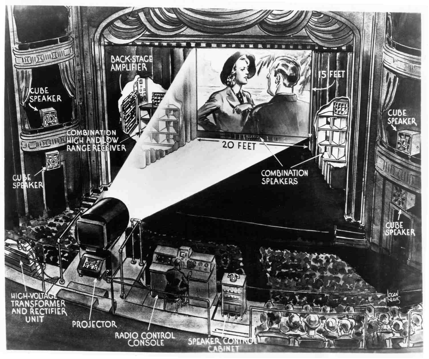Moving the Movies
The movie files will have to be moved around from central distribution points to the theaters. A successful system must support at least two delivery methods:
Physical Delivery. The movies might be stored on optical disks of some type or other physical media that can be sent to the theaters by normal courier services.
Telecommunications networks. The files can also be transmitted to the theaters over fiber-optic, copper wire or satellite communications links.
Not every theater will be able to accept delivery over satellite, fiber or wire networks; physical delivery may prove inconvenient or too expensive for many locations. We must be able to get movies delivered safely and efficiently to all screens, including those located in rural areas, in the basements of urban skyscrapers or in the outskirts of third world metropolis.
Forward, Into The Past
Digital cinema has definitely become a “when” question and not an “if” question. Electronic projection systems are the basic enabling technology and they have finally become good enough for us to consider putting together a system that will replace film as the primary medium for distributing feature films. The ancillary equipment, software and systems necessary to complete a workable solution are either available off-the-shelf or can be developed relatively easily.
The primary hurdles that the industry must overcome are economic and political. Who benefits? Who wins? Who loses? Who makes money? And who pays?
These are not trivial issues. The industry has been playing with this concept for a long time and we’re still really in the talking stages. The drawing below is based on an actual demonstration conducted at the New Yorker Theater in Manhattan in 1941. RCA collaborated with 20th Century Fox on projection television systems for showing special events. (Photo courtesy of the David Sarnoff Collection, Princeton, New Jersey.)
